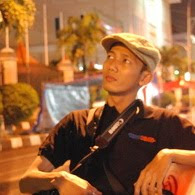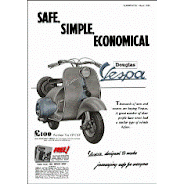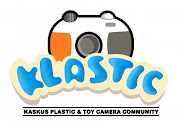main |
sidebar
Posted by
Henry Lutfidwianto Susilotomo
at
5:27 AM

Ska (pronounced /ˈskɑː/, Jamaican [skja]) is a music genre that originated in Jamaica in the late 1950s, and was the precursor to rocksteady and reggae.[1] Ska combined elements of Caribbean mento and calypso with American jazz and rhythm and blues. It is characterized by a walking bass line accented with rhythms on the offbeat.
In the early 1960s, ska was the dominant music genre of Jamaica and was popular with British mods. Later it became popular with many skinheads.[2][3][4][5] Music historians typically divide the history of ska into three periods: the original Jamaican scene of the 1960s (First Wave), the English 2 Tone ska revival of the late 1970s (Second Wave) and the third wave ska movement, which started in the 1980s (Third Wave).
Etymology
There are different theories about the origins of the word ska. Ernest Ranglin claimed that the term was coined by musicians to refer to the "skat! skat! skat!" scratching guitar strum.[6] Another explanation is that at a recording session in 1959 produced by Coxsone Dodd, double bassist Cluett Johnson instructed guitarist Ranglin to "play like ska, ska, ska", although Ranglin has denied this, stating "Clue couldn't tell me what to play!".[7] A further theory is that it derives from Johnson's word skavoovie, with which he was known to greet his friends.[8] Jackie Mittoo insisted that the musicians themselves called the rhythm Staya Staya, and that it was Byron Lee who introduced the term 'ska'.[9]
History
After World War II, Jamaicans purchased radios in increasing numbers and were able to hear rhythm and blues music from Southern United States cities such as New Orleans by artists such as Fats Domino and Louis Jordan. The stationing of American military forces during and after the war meant that Jamaicans could listen to military broadcasts of American music and there was a constant influx of records from the US. To meet the demand for that music, entrepreneurs such as Prince Buster, Clement "Coxsone" Dodd, and Duke Reid formed sound systems. As jump blues and more traditional R&B began to ebb in popularity in the early 1960s, Jamaican artists began recording their own version of the genres.[10] The style was of bars made up of four triplets, similar to that of "My baby just cares for me" by Nina Simone, but was characterized by a guitar chop on the off beat - known as an upstroke or skank - with horns taking the lead and often following the off beat skank and piano emphasizing the bass line and, again, playing the skank.[1] Drums kept 4/4 time and the bass drum was accented on the 3rd beat of each 4-triplet phrase. The snare would play side stick and accent the 3rd beat of each 4-triplet phrase. [1] The upstroke sound can also be found in other Caribbean forms of music, such as mento and calypso.[11]
One theory about the origin of ska is that Prince Buster created it during the inaugural recording session for his new record label Wild Bells.[11] The session was financed by Duke Reid, who was supposed to get half of the songs to release. However, he only received one, which was by trombonist Rico Rodriguez.[citation needed] Among the pieces recorded were "They Got to Go", "Oh Carolina" and "Shake a Leg."[citation needed] According to reggae historian Steve Barrow, during the sessions, Prince Buster told guitarist Jah Jerry to "change gear, man, change gear."[citation needed] The guitar began emphasizing the second and fourth beats in the bar, giving rise to the new sound. The drums were taken from traditional Jamaican drumming and marching styles. To create the ska beat, Prince Buster essentially flipped the R&B shuffle beat, stressing the offbeats with the help of the guitar.
The first ska recordings were created at facilities such as Studio One and WIRL Records in Kingston, Jamaica with producers such as Dodd, Reid, Prince Buster, and Edward Seaga.[11] The ska sound coincided with the celebratory feelings surrounding Jamaica's independence from the UK in 1962; an event commemorated by songs such as Derrick Morgan's "Forward March" and The Skatalites' "Freedom Sound." Because the newly-independent Jamaica didn't ratify the Berne Convention for the Protection of Literary and Artistic Works until 1994 copyright was not an issue, which created a large number of cover songs and reinterpretations. Jamaican musicians such as The Skatalites often recorded instrumental ska versions of popular American and British music, such as Beatles songs, Motown and Atlantic soul hits, movie theme songs, or surf rock instrumentals. Bob Marley's band The Wailers covered the Beatles' "And I Love Her," and radically reinterpreted Bob Dylan's "Like a Rolling Stone."
Byron Lee & the Dragonaires performed ska with Prince Buster, Eric "Monty" Morris, and Jimmy Cliff at the 1964 New York World's Fair. As music changed in the United States, so did ska. In 1965 and 1966, when American soul became slower and smoother, ska changed its sound accordingly and evolved into rocksteady.[12][11]
2 Tone
Main article: 2 Tone
The 2 Tone genre, which began in the late 1970s in the areas around Birmingham and Coventry in England, was a fusion of Jamaican ska rhythms and melodies with punk rock's more aggressive guitar chords and lyrics.[12] Compared to 1960s ska, 2 Tone music had faster tempos, fuller instrumentation and a harder edge. The genre was named after 2 Tone Records, a record label founded by Jerry Dammers of The Specials. Although 2 Tone bands were respectful to the original Jamaican ska artists, The Specials failed to credit musicians such as Prince Buster, as the composer of music on their 1979 debut vinyl release. However, in many cases, the reworking of classic ska songs turned the originals into hits again in the United Kingdom. The 2 Tone movement promoted racial unity at a time when racial tensions were high in the UK. Riots in British cities were a feature during the summer that The Specials song "Ghost Town" was a hit, although this work was in a slower, Reggae beat. Most of the 2 Tone bands had multiracial lineups, such as The Beat (known as English Beat in North America) and The Selecter.[1] Although only on the 2 Tone label for one single, Madness were one of the most effective bands at bringing the 2 Tone genre into the mainstream.
Third wave
See also: Ska punk
In the 1980s, bands influenced by the 2 Tone ska revival started forming in the United States and other countries.[12] The style was characterized by brass instruments, a heavily-accented offbeat, and usually a much faster, punk-inspired, tempo.[12] The first well-known American ska revival band was The Toasters, who played in a 2 Tone-influenced style and paved the way for the third wave ska movement. Other notable early third wave ska bands included The Donkey Show, The Uptones, Fishbone, Operation Ivy, Let's Go Bowling and Bim Skala Bim.
Most third wave bands emerged from Southern California, but by the early 1990s, ska revival bands were forming throughout the United States and many other countries. Tazy Phyllipz and Albino Brown of the Ska Parade radio show popularized the label "third wave ska." Ska Parade helped promote many Southern California bands such as Sublime, No Doubt, and Let's Go Bowling.[13]
In 1993 The ska-core band Mighty Mighty Bosstones signed with Mercury Records and appeared in the film Clueless, with their first mainstream hit "Where'd You Go?" Bands such as No Doubt, Reel Big Fish, Less Than Jake and Goldfinger brought ska mainstream attention. During this time, many ska songs became hits on mainstream radio, including "Spiderwebs", "Sell Out", and "The Impression That I Get."
Many third wave ska bands played ska punk and its subgenre, ska-core. Ska punk took 2 Tone and increased the punk rock elements, while ska-core blended ska with hardcore punk. However, some third wave ska bands — such as The Allstonians, Skavoovie and the Epitones, Hepcat and The Slackers — continued to play in a more traditional 1960s-influenced style. Many of the popular accouterments of the 2 Tone and mod movements were also popular with the third wave of ska. The checkerboard pattern of the 2 Tone record label became a popular stylistic element on third wave ska clothing, album covers, and posters. By the late 1990s, mainstream interest in third wave ska bands waned as other music genres gained momentum.[citation needed]
Record labels
In 1981, The Toasters' frontman Robert "Bucket" Hingley created Moon Ska Records, which became the biggest American ska record label. It featured many bands that became staples in third wave ska.[citation needed] Moon Ska Records officially folded in 2000, but Moon Ska Europe continued operating in the 2000s, and later relaunched as Moon Ska World. In 2003, Hingley launched a new ska record label, Megalith Records. In 1996, Mike Park of the band Skankin' Pickle officially founded Asian Man Records, which was the biggest West coast United States third wave ska label.[citation needed] In 1997, Brett Gurewitz and Tim Armstrong founded Hellcat Records, which mostly featured punk rock bands, but also featured several ska and ska punk acts. In Montreal, Canada, The Planet Smashers' lead singer and guitarist Matt Collyer founded Stomp Records in 1994. Fueled by Ramen was started by Less Than Jake and features many lesser known ska bands.
(from: http://en.wikipedia.org/wiki/Ska)
0 Comments:
Post a Comment








































